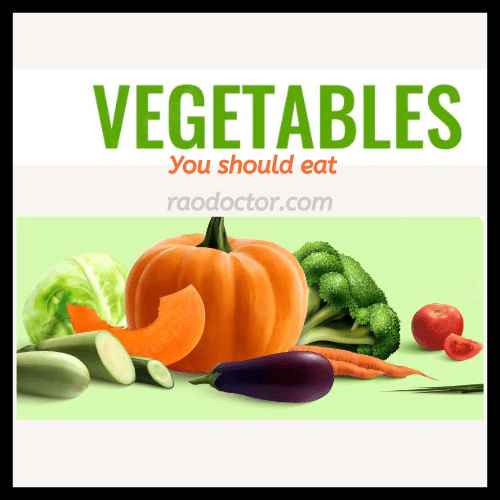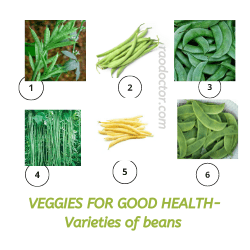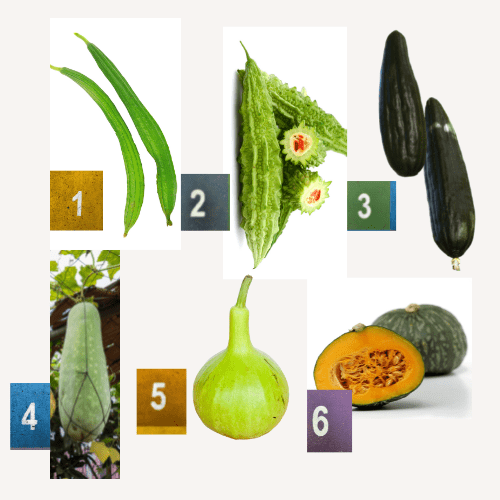8 Vegetables and the benefits of eating them
In my previous articles on Prudent Diet 1 2, I have made references to a few vegetables like broccoli, beans, tomatoes and bell pepper. As such, I am a foodie and love eating a variety of vegetables. My recent articles have been all about some or the other disease, their prevention or treatment.

In this article, I have deviated from the topic of illness and instead focused on eating the right type of vegetables by learning about their special features and benefits. Do read on-
Table of Contents
Why should we eat vegetables?
You might have heard all the benefits of eating your greens. There’s a reason we are so frequently advised to eat more of them.
Not only do they taste great, but they are also packed with vitamins and minerals that keep our body running smoothly.
But now you might be thinking “How on earth do I do that?” The answer is simple – by introducing more of those delicious green veggies into your diet.
Veggies not only keep you healthy, but they can also help you lose weight and lower your risk of developing diseases like diabetes and heart disease.
Let’s take a look at 8 vegetables that are especially good for your gut health: Here’s a short video to let you know what this articles brings to you-
1.Kale
If you want to eat a nutrient-rich diet, you should include kale in your meal plan. This leafy green vegetable is full of fiber, folic acid, calcium, vitamin A, vitamin C and vitamin K.
Kale is also a great source of lutein, a carotenoid that may reduce the risk of macular degeneration and other eye diseases, especially among people who are at a high risk for developing eye diseases, such as people who have diabetes, are over 50 years old, are smokers, or who have high blood pressure.
Kale also contains kaempferol, a flavonoid that may reduce the risk of developing certain cancers, including cancers of the lung, breast, and digestive tract. Eating kale once a week may provide you with enough kaempferol to reduce your risk of cancer. In addition to these essential nutrients, kale is also a good source of manganese and iron.
2.Spinach

Spinach is one of the healthiest vegetables that you can eat. This leafy green contains high amounts of vitamins A, B6, C, E, K and minerals such as iron, magnesium and calcium.
It is also a good source of protein and dietary fiber, making it a great addition to your diet. Spinach is a very nutritious vegetable and is therefore often considered as a superfood.
It is a great source of iron that is easily absorbed by your body. Iron is an important mineral because it helps your red blood cells carry oxygen throughout your body. A lack of iron can lead to feelings of weakness and fatigue. Iron deficiency is especially common in menstruating women, pregnant women, and growing children.
Spinach also contains lutein and zeaxanthin which are important for eye health. Next time you want to eat a healthy snack, try mashing up some spinach and adding it to your salad. You can also try adding it to sandwiches or wraps. You can try making a cocktail smoothie using spinach as one of the ingredients.
3.Swiss chard
While Swiss chard though not as popular as other leafy greens, it is equally nutritious and has a milder taste. This vegetable is rich in vitamins A (as beta-carotene), C, K and folate, as well as minerals such as potassium, iron, magnesium and manganese.
It is also a good source of protein and has very little fat. Swiss chard has a slightly bitter taste, but you can make it more palatable by cooking it with a sweetener, such as sugar or honey.
Swiss chard is a great choice for people with diabetes because it contains very little carbohydrate. It is also a good source of dietary fiber. Eating more dietary fiber can help reduce your risk of heart disease and diabetes. Try adding this vegetable to your soups, stews, casseroles, or curries. You can also add it to salads, sandwiches or wraps. You may have come it in your hamburger or hot dog.
4.Dark leafy greens
Dark leafy greens, such as kale, Swiss chard and spinach, are often called super foods because of their high nutritional value. These greens also have a low glycemic index, which means that they do not cause a spike in blood sugar as many other foods do.
In India, apart from spinach and kale, we Indians consume mustard greens with maize flour flat bread [ known popularly as Sarso-ka-saag aur makai ki roti], fenugreek greens, red Gok Shura, Amaranthus and fennel greens or dill. Shown below are different types of green leafy vegetables available in the market-

These greens are especially beneficial for people with digestive disorders, such as irritable bowel syndrome, diverticulitis, and inflammatory bowel diseases. They also protect against colorectal cancer, cardiovascular disease and other chronic diseases. When it comes to gut health, these greens are a real powerhouse. They are rich in fiber, vitamins, and minerals, such as iron, calcium, folate, vitamin C and beta-carotene.
These greens also contain oxalic acid, which can bind to minerals present in the body, preventing them from being absorbed by the body. In order to make these greens even more nutritious, you can try making a salad dressing using oil, vinegar and honey.
5.Beans and Legumes
Beans and legumes are a great source of fibre and protein, and are also low in calories. Not only do these help promote good gut health, but they also help to lower your cholesterol, blood pressure and the risk of developing type 2 diabetes.
French beans added to cauliflower to make a curry taste great along with dal-chawal or chapati [Indian flat bread]. French beans can also be used along with noodles to make a tasty dish.


The best part about beans and legumes is that they can be added to almost any meal. You can add them to your salads, soups, curries, casseroles, sandwiches or wraps. You can also make them into dips, snacks or even desserts.
If you are new to eating legumes, start with some of the smaller varieties, such as lentils and chickpeas. You can find them in most grocery stores. Add them to your meals and you will notice a difference in your gut health.
6.Tomatoes and Brinjals
Tomatoes and brinjals are two vegetables that are very good for your gut health. They are rich in fibre, vitamins C, A and B6, potassium, folic acid and lycopene, a powerful antioxidant that may reduce the risk of developing certain cancers, such as breast and prostate cancer.
The fibre in tomatoes can help regulate your bowel movements and prevent constipation. It can also reduce your risk of developing diverticular disease and other gastrointestinal disorders.
Fresh tomatoes or tomato sauce can be added to almost any meal, and brinjals can be made into curries or stir-fries. You can also try adding them to salads or sandwiches.
7.Squashes and gourds
Squashes and gourds are not only delicious, but they are also very good for your gut health. They are rich in vitamin A and fibre, potassium and water and very low in calories. Eg. of squashes and gourds[ see the picture below]

Squashes and gourds are also low in fat and contain very little protein. They can be enjoyed in many forms and can be easily added to many different meals.
You can add them to soups, stews, casseroles, curries, salads, stir-fries, sandwiches and wraps. Squashes are also great for people with diabetes. They are very low in carbohydrate and can help to keep your blood sugar level under control.
8.Potato, sweet potato, beetroot, radish and turnips
Potatoes, sweet potatoes, beetroot, radish and turnips are root vegetables and are very good for your gut health. They are rich in fibre and vitamins A, B6, C, E and K. They also contain many minerals such as potassium, iron, magnesium and manganese.
Potatoes are a great source of energy and are low in fat and contain very little protein. However, sweet potatoes and turnips have more protein than potatoes do. You can enjoy these vegetables in many ways such as making a stew, soup, salad or casserole.
You can also mash them up and use them as a side dish with your meals or eat them as fritters or bhajis during tea-time. In India, potato vada [also known as Indian burger], is very popular in most cities.
Conclusion
Eating more greens is the best way to improve your health. There are many different types of vegetables to choose from; it just depends on what you like. If you don’t normally eat a lot of vegetables, it can be challenging to add them to your diet. But don’t get discouraged. Start small- add veggies to salads, soups, casseroles, or even sandwiches. You will soon find that it is not as challenging as you thought.
Hope you have enjoyed reading this article. Now, go out there and buy some vegetables for your table!
If you have found this article useful, kindly share it with your friends and family members. I end this article with this quote-
Disclosure
This article contains affiliate links that pays the author a small commission on clicking the links and purchasing the products without any extra charges to the purchaser.





